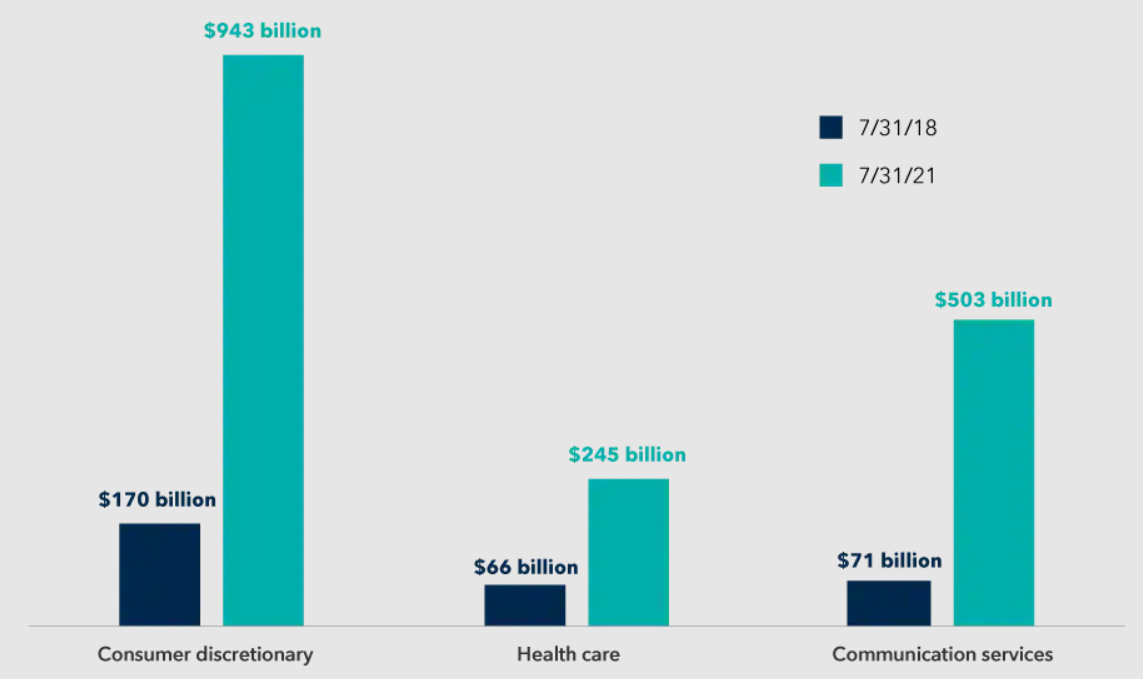After years of a hands-off approach to its new economy sectors, the Chinese government surprised investors with several new regulations. Since February all-time highs, the Chinese stock index (MSCI China) is down 31%, with internet stocks down 40%. For select sub-sectors, recent regulations have derailed long-term fundamentals; however, for much of the Chinese investment universe, the long-term positive growth outlook has not changed, while “sell now, ask questions later” behavior has dragged down share prices as a result of a short-term hit to sentiment. It is key for investors to sift through the noise, identifying both risks and opportunities created during this period of volatility.

What is happening:
- Regulatory tightening is targeted, mainly focused on education and internet sectors, rather than a broad-based tightening campaign affecting the whole private sector (like in 2018).
What to look for:
End of regulatory tightening campaign: 2018’s regulatory cycle lasted about 12 months, thus the current round of regulatory tightening is unlikely to end in the short-term, unless there are significant growth concerns (which is not expected).
What to do:
Broadly speaking, this short-term noise has not fundamentally changed the long-term investment opportunity in China based on technological innovation, growth of the domestic consumer, and the development of local capital markets.
Chinese assets’ roles in global portfolios should have the potential to increase over time, given their growth, income and diversification benefits.
- Investing in China the right way is key: with a portfolio of companies, listed both offshore and onshore, with a manager that has a local presence and can do long-term fundamental analysis.
We at E2E Financial believe in a diversified investment portfolio that includes an allocation to international companies and US companies that do a significant percent of their business internationally. That includes investing (generally around 5% or less) in Chinese stocks via experienced fund managers. We keep an eye on the funds and their managers. That’s what you hire us to do.
Need that second opinion on your investment portfolio? Reach out to get your complimentary portfolio analysis.
Sources: JPM Morgan & Capital Group
The opinions voiced in this material are for general information only and are not intended to provide specific advice or recommendations for any individual.
International investing involves special risks such as currency fluctuation and political instability and may not be suitable for all investors. Because of their narrow focus, sector investing will be subject to greater volatility than investing more broadly across many sectors and companies.
There is no guarantee that a diversified portfolio will enhance overall returns or outperform a non-diversified portfolio. Diversification does not protect against market risk.




